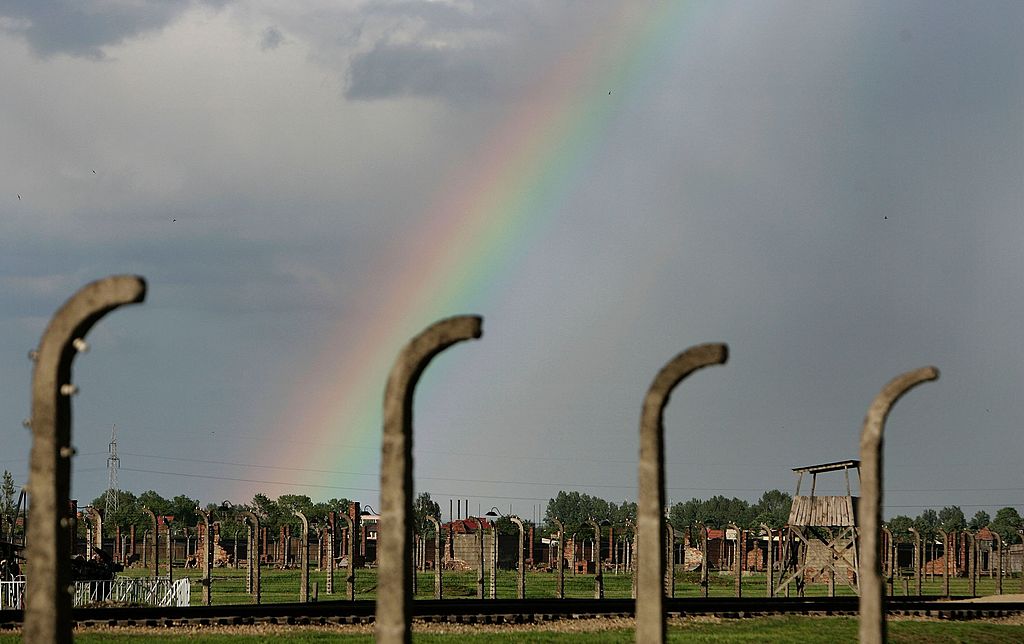“The spiritual nature, like the bodily nature, will be served; deny him food and he will swallow poison,” said CS Lewis. In Western countries, organized religion has been in decline for two centuries; Friedrich Nietzsche even declared that “God is dead”. Do the decline and fall of religion have political consequences? Can totalitarian ideology develop in the vacuum left by religion?
To find the answer, it is worth looking to Germany in the 1930s. Did superficial Christianity – a lack of deeply rooted Christian beliefs – make Germans more susceptible to the Nazi Party’s message during the 1930s? of Adolf Hitler’s rise to power?
In the unfertile Christian soils of Germany, there was room for new gods and messiahs to arise.
Germans first converted to Christianity during the Roman Empire when it was a popular movement. In other parts of Germany, Christianity arrived up to 1,000 years later. There, conversion was often done by the sword, with authorities forcing subjects to change their faith.
In the not very fertile Christian soils of Germany, where the cross was planted somewhat late, there was room for new gods and messiahs to arise. Enter the Nazi Party, with a flair for the dramatic and an eye for the devout theatrics. Their party conventions were not just meetings; they were great shows organized in “cathedrals of light”, thanks to anti-aircraft searchlights. These weren’t just political rallies; they were quasi-religious experiences.
The party’s penchant for sacred symbolism did not stop there. Their flags were not only adorned with symbols; they were “banners of blood,” imbued with the blood of their martyred brothers. And Hitler? He was not just a political leader; he was the Führer, an almost messianic figure, imbued with supernatural powers. He was the “redeemer” of Germany, the one who brought the nation out of the ashes of Versailles.

By closing his speech with “Amen,” Hitler was not only waging a political campaign; he led a quasi-religious crusade. As political commentator Walter Lacquer wryly observed in 1962, siding with Hitler was not a simple political decision; it was an act of faith toward a quasi-religious mass movement. In the German political world of the time, one could say, the faithful did not just vote; they converted.
To test our theory – that the absence of deeply held religious beliefs helped the Nazis – we grouped three measures into a new research paper. We counted how many people in a given place gave religious names to their children; we looked at whether they believe in clairvoyance (not exactly sanctioned by the official church); and we measured the share of famous people from any place who passed through the church. The combination of these factors is what we call “shallow Christianity,” or a lack of sincere Christian belief. The data shows a striking trend: where religious names are rare, beliefs in clairvoyance are common, and where few or no local leaders have religious professions, the Nazi Party has done spectacularly well. In the last election in 1933, the less religious regions recorded a Nazi vote share of 55 percent; the most religious, “only” about 40 percent. Party membership rates were 50 percent higher in the least Christian areas.
Christian first names appear to have predictive power over who did or did not join the Nazi ranks
Why was Christianity so much more firmly rooted in some regions of Germany than in others? The answer lies before Luther posted his theses on the door of the Wittenberg church in 1517. If we look at what Germany was like before the 16th century, a few practical criteria seem to explain why Christianity taken, and did not take root: the proximity of medieval monasteries, bastions of Christianization, and the distance from ancient pagan places of worship.
Imagine Germany, dotted with Stonehenge-style stone circles and mysterious moors, where, let’s just say, more than just prayers were offered, including human sacrifices. These sites were favored places for pagan rituals, long before church bells began to ring.
If you map these ancient sites and measure the distances between them and the districts of interwar Germany, the measuring tape reveals an interesting answer: the closer a place was to these relics of paganism, the more it was removed from the shadow of a medieval monastery, more Christianity was even more “superficial”, some 400 years after the end of the Middle Ages. It’s not just a hunch – it’s engraved in the very names people had, the superstitions they harbored, and the jobs they held.
Interestingly, when we zoom in on the individual level, the link between religiosity and support for the Nazis becomes even clearer. Christian first names seem to have predictive power over who did or did not join the Nazi ranks. Party members systematically had fewer religious names than their fellow citizens. And as for the party bigwigs, the upper echelons? They are at the bottom of the piety scale, the least religious of the lot. It’s almost as if the higher you go in the party, the farther you get from the church tower.
Political scientists have long suspected that the decline of traditional community ties and weakening religiosity could set the stage for a totalitarian ideology. Our study, “From the Death of God to the Rise of Hitler,” provides some of the first detailed, local, individual-level data showing just how powerful this connection can be. Humans have spiritual and communal needs, desire purpose, and want to see that their efforts are rewarded with meaning as well as money and possessions. Where traditional religion failed to provide spiritual “sustenance,” citizens actually began to “swallow poison,” as CS Lewis put it. In doing so, they fell under the spell of the siren song of the Nazi Party and its quasi-religious message that promised to redeem Germany under the leadership of a leader with extraordinary, seemingly supernatural powers: Adolf Hitler.



